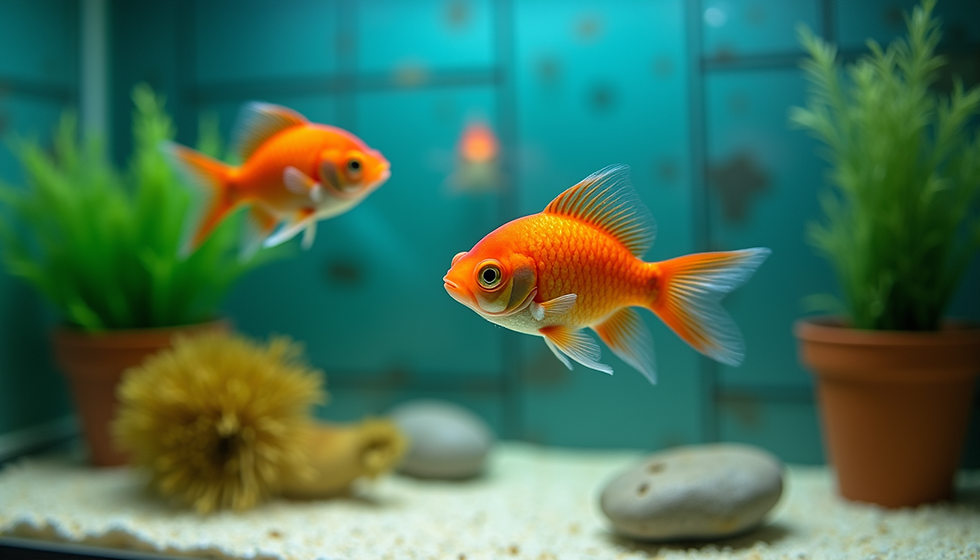Essential Tips for Maintaining a Healthy Aquarium
- John Wright-Ibarra

- Jun 10, 2025
- 3 min read
Creating a beautiful and vibrant aquarium is both an art and a science. Whether you’re a beginner or an experienced aquarist, understanding how to maintain your aquarium is essential for the health and happiness of your aquatic pets. This blog post will cover essential tips for maintaining a healthy aquarium, from selecting the right equipment to regular maintenance routines.
Understanding Aquarium Maintenance
Proper aquarium maintenance ensures that your fish and plants thrive in a healthy environment. It's crucial to regularly monitor various factors such as water quality, temperature, and fish behavior. If you're neglecting these components, it could lead to unhealthy aquatic life or even fish deaths.
Start by establishing a maintenance routine. Create a schedule for tasks like water changes, filter cleaning, and equipment checks. Consistency is key. For example, set aside time each week to test the water quality and adjust parameters as necessary. This proactive approach can prevent issues before they escalate.

Routine Water Changes
One of the most important aspects of aquarium maintenance is performing regular water changes. Freshwater tanks should have a 10-15% water change each week, while saltwater aquariums may require 20-30% changes every two weeks.
Water changes help to remove toxins and replenish essential minerals and nutrients. Use a gravel vacuum when changing water to clean the substrate and remove detritus. This not only improves water clarity but also promotes a healthier environment for your fish.

Monitoring Water Parameters
Maintaining a healthy aquarium requires monitoring key water parameters. These typically include temperature, pH, ammonia, nitrite, and nitrate levels. In most freshwater tanks, the ideal pH range is between 6.5 and 7.5, while saltwater tanks usually prefer a range of 7.8 to 8.5.
Invest in a good quality test kit to measure these parameters accurately. Regular testing helps you catch any fluctuations that could harm your fish. For example, sudden spikes in ammonia levels can lead to “ammonia poisoning,” which is detrimental to your aquatic pets.
Furthermore, keep an eye on the tank temperature; most fish thrive in environments ranging from 75 to 82 degrees Fahrenheit. A reliable heater can maintain this temperature without large fluctuations.

Cleaning and Maintenance of Equipment
Another fundamental aspect of aquarium maintenance is caring for your equipment. Clean your filters regularly according to the manufacturer's instructions. A clogged filter can reduce water flow and impact water quality.
Consider adding a backup heater and filter to your setup. In the event of failure, having these spares on hand can save your fish from an unstable environment. Always keep your equipment in good working order and replace any worn-out components immediately.
You might want to look up aquarium services near me if you need assistance with equipment maintenance or repairs.
How to Choose the Right Fish
Selecting the right species for your aquarium is crucial for overall health. Research each species’ compatibility, dietary needs, and environmental requirements. Some fish are aggressive and should not be kept with peaceful varieties.
Consider creating a balanced community tank that accommodates multiple species. Additionally, stocking your tank appropriately reduces stress. A general rule is to allow one inch of fish per gallon of water. Overcrowding can lead to poor water quality and stress among fish, increasing the likelihood of illness.
Ensuring a Balanced Diet
Feeding your fish a balanced diet is vital for their health. Vary their diet with a mix of flakes, pellets, freeze-dried foods, and fresh or frozen options like brine shrimp or bloodworms. Not only does this keep your fish healthy, but it can also enhance their coloration and reproductive success.
Avoid overfeeding, as leftovers can pollute the water and create harmful conditions. A good practice is to feed your fish what they can consume in about 2-3 minutes, once or twice a day.
Regular Observation and Behavior Monitoring
Monitoring your aquarium’s inhabitants daily can help catch any health issues early. Observe your fish for signs of stress, illness, or aggression. Look for changes in behavior, such as lethargy, loss of appetite, or unusual swimming patterns.
A healthy fish is usually active and has vibrant colors. If you notice any unusual behavior, identify the risks and address them quickly to maintain a healthy balance in your aquarium.
Conclusion: Keeping Your Aquarium Thriving
Maintaining a healthy aquarium requires commitment and attention to detail. Regular water changes, careful monitoring of water parameters, and keeping your equipment clean are just a few essential practices. Choose the right fish, ensure a balanced diet, and monitor their behavior to keep your aquatic pets thriving.
With diligent care, your aquarium can flourish and provide a beautiful and serene environment for both you and your fish. Now that you have a structured approach to aquarium maintenance, dive into your aquatic adventure with confidence!





Comments